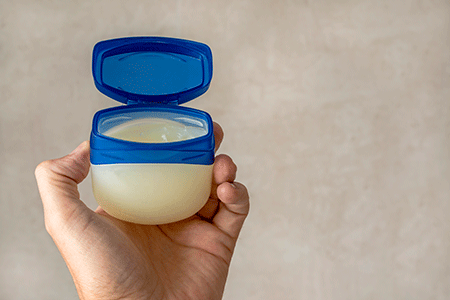Eczema types: Stasis dermatitis self-care
Eczema types: Stasis dermatitis self-care
12 healthy habits that help prevent worsening stasis dermatitis
If you have stasis dermatitis, a treatment plan along with self-care can get the disease under control and prevent it from worsening. Here are the healthy habits that dermatologists recommend for their patients who have stasis dermatitis.
Elevate your legs above the heart: Do this throughout the day. If possible, dermatologists recommend that you elevate your legs above your heart:
- Once every 2 hours for 15 minutes
- While you sleep (keep your legs elevated with pillows)
Why elevating your legs helps
When you raise your legs above your heart, you improve blood flow.

Take breaks when you must sit or stand for an hour or longer. If you must sit or stand for long periods, take a break every hour and walk briskly for 10 minutes. This will jump-start your circulation.
Get physical. Exercise can improve your circulation and strengthen your calf muscles. Walking is an especially good exercise for people who have stasis dermatitis. Be sure to build up slowly and ask your dermatologist how often you should exercise.
Wear loose-fitting cotton clothing. Wool and other rough fabrics, polyester, and rayon can irritate skin with stasis dermatitis and lead to a flare-up.
A loose fit is also important. Tight waistbands and snug pants interfere with your circulation. If clothing rubs against stasis dermatitis, the fabric can irritate the sensitive skin.Use your compression garment if your dermatologist recommends one. Compression can:
- Improve the circulation in your legs
- Prevent open sores
- Reduce your risk of another flare
A physical therapist can offer tips for reducing the pain when you put on the garment. Most patients find that once they start wearing the compression garment, their swelling decreases within a few weeks. With less swelling, they start to feel better.Avoid injuring the area and aggravating the stasis dermatitis. The skin with stasis dermatitis is very sensitive. If you injure or aggravate the area, it could lead to an infection or open sores.
To avoid irritating the skin with stasis dermatitis, avoid touching anything that could irritate it, such as:- Pet hair
- Plants
- Grass
- Cleaning products
- Perfume
- Skin care products that contain fragrance (use only products labeled "fragrance-free.")
Scratching can aggravate stasis dermatitis, which could lead to an infection
To help patients avoid scratching, dermatologists offer these tips:
- Apply your medication as directed
- Place a clean, cool compress on the itchy area for 15 minutes
- Slather on a fragrance-free moisturizer like petroleum jelly
- Take a cool bath in colloidal oatmeal
If you injure your leg or irritate the skin, contact your dermatologist.

Moisturize dry skin. Moisturizer helps prevent scaly skin and irritation. Petroleum jelly works well for most patients. If you prefer to use another moisturizer, choose an ointment or thick cream that says "fragrance-free" on the container.
Take care when bathing. Soaps and rough-textured towels or bath sponges can irritate skin with stasis dermatitis. Dermatologists recommend the following to their patients with stasis dermatitis:
- Use a mild, fragrance-free cleanser rather than soap. When you shower or take a bath, use only this cleanser. Rinsing soap from other parts of your body can cause the soap to run down your body, which can irritate skin with stasis dermatitis.
- After bathing, gently pat the water from your skin with a clean towel. You'll want to keep a bit of water on the skin with stasis dermatitis.
- Within 2 minutes of bathing, apply petroleum jelly or a thick, creamy moisturizer that is fragrance-free on your damp skin. This helps to keep moisture in your skin. Keeping your skin moisturized helps to prevent scaly skin and irritation.
Reach and stay at a healthy weight. Staying at a healthy weight can reduce swelling and improve your overall health.
Drink 8 glasses of water every day. This can improve circulation and reduce swelling.
Limit salt. Too much salt can decrease your blood flow. Even if you never salt your food, you may be getting too much salt. According to the American Heart Association, the average American consumes 3,400 milligrams of sodium every day. The recommended daily amount is 1,500 milligrams or less.3
For tips that can help you cut back on the salt, go to, How to reduce sodium.Keep your dermatology appointments. Stasis dermatitis is a condition that you may have for life. Learning how to manage it and finding out what works best for you can take time. The time spent learning what to do will pay off. Most patients find that once they know what to do, they can manage the disease at home with healthy habits and medication as needed to treat flare-ups.
If you need a dermatologist, you can find one by going to, Find a dermatologist.
Related AAD resources
Images
Getty Images
References
American Academy of Dermatology. "Stasis dermatitis and leg ulcers." Basic Dermatology Curriculum. Last accessed August 28, 2020.
3 American Heart Association. "9 out of 10 Americans eat too much sodium." Page last accessed August 31, 2020.
Flugman SL, Clark RA. [editor: Elston DM] "Stasis dermatitis." Medscape. Last updated Mar 27, 2020.
Nedorost S, White S, et al. "Development and implementation of an order set to improve value of care for patients with severe stasis dermatitis." J Am Acad Dermatol. 2019 Mar;80(3):815-7.
Reider N, Fritsch PO. "Other eczematous eruptions." In: Bolognia JL, et al. Dermatology. (fourth edition). Mosby Elsevier, China, 2018:235-6.
Sundaresan S, Migden MR, et al. "Stasis dermatitis: Pathophysiology, evaluation, and management. Am J Clin Dermatol. 2017;18(3):383-90.
Skin Care Physicians of Costa Rica
Clinica Victoria en San Pedro: 4000-1054
Momentum Escazu: 2101-9574
Please excuse the shortness of this message, as it has been sent from
a mobile device.

0 Comments:
Post a Comment
Subscribe to Post Comments [Atom]
<< Home